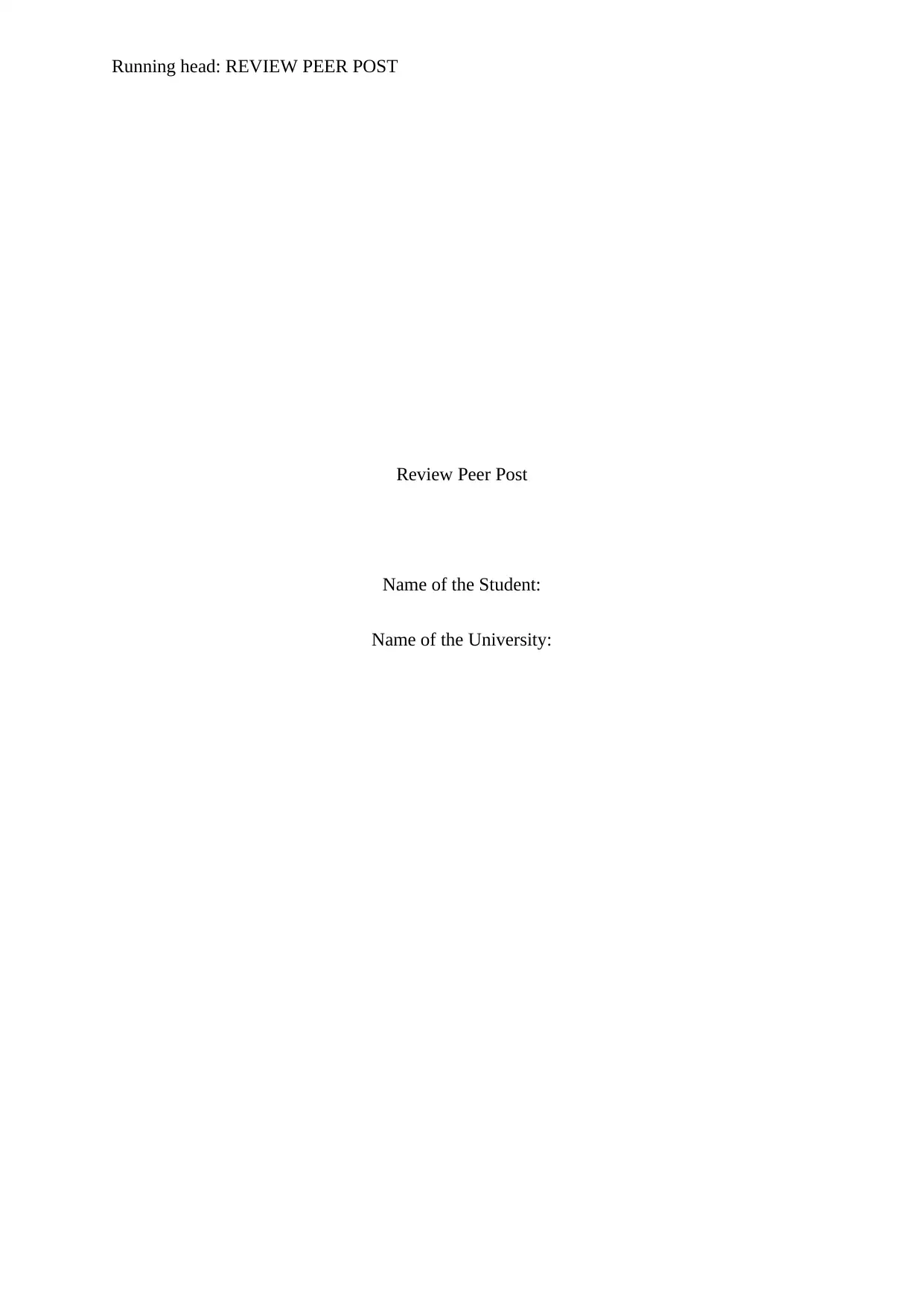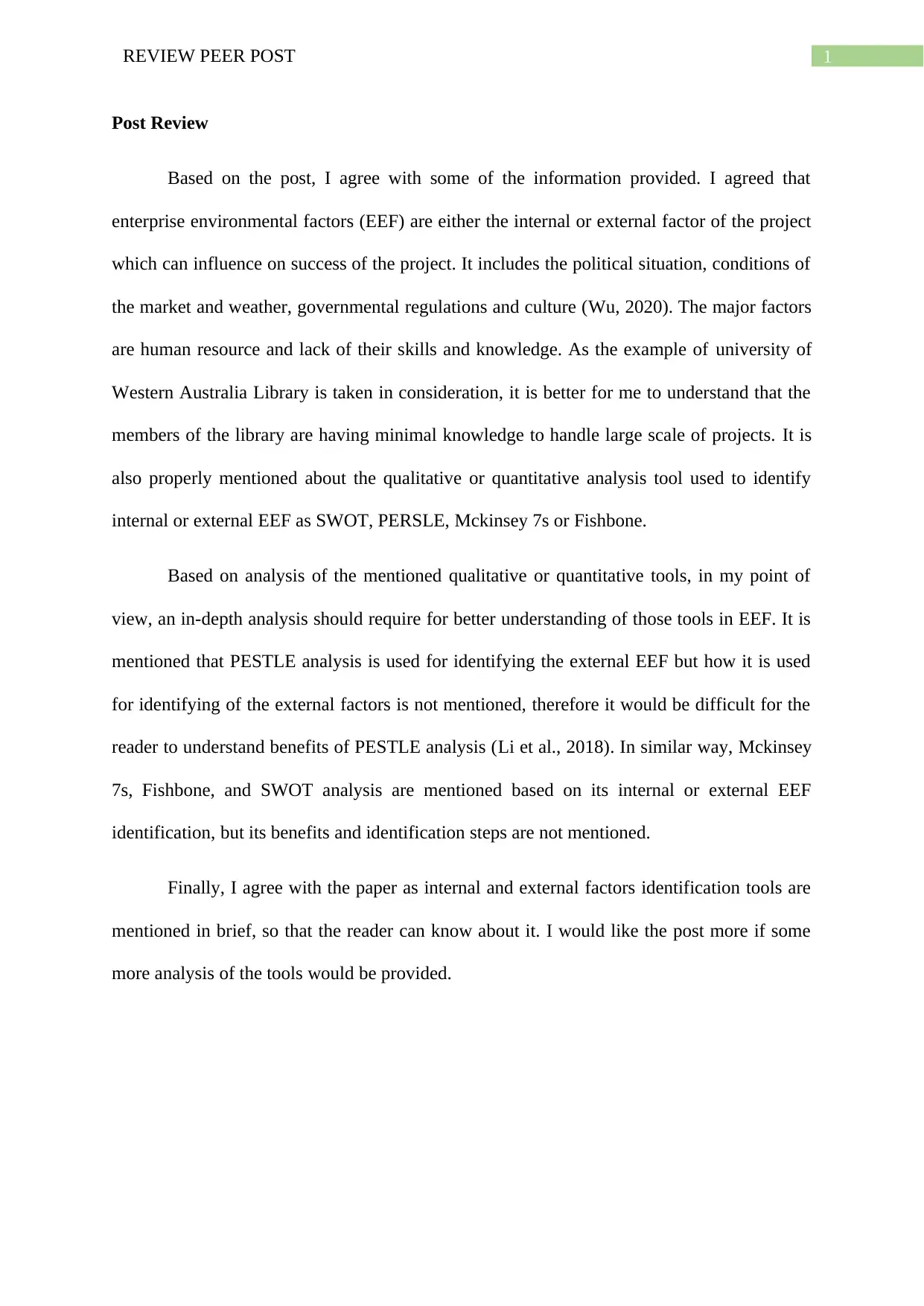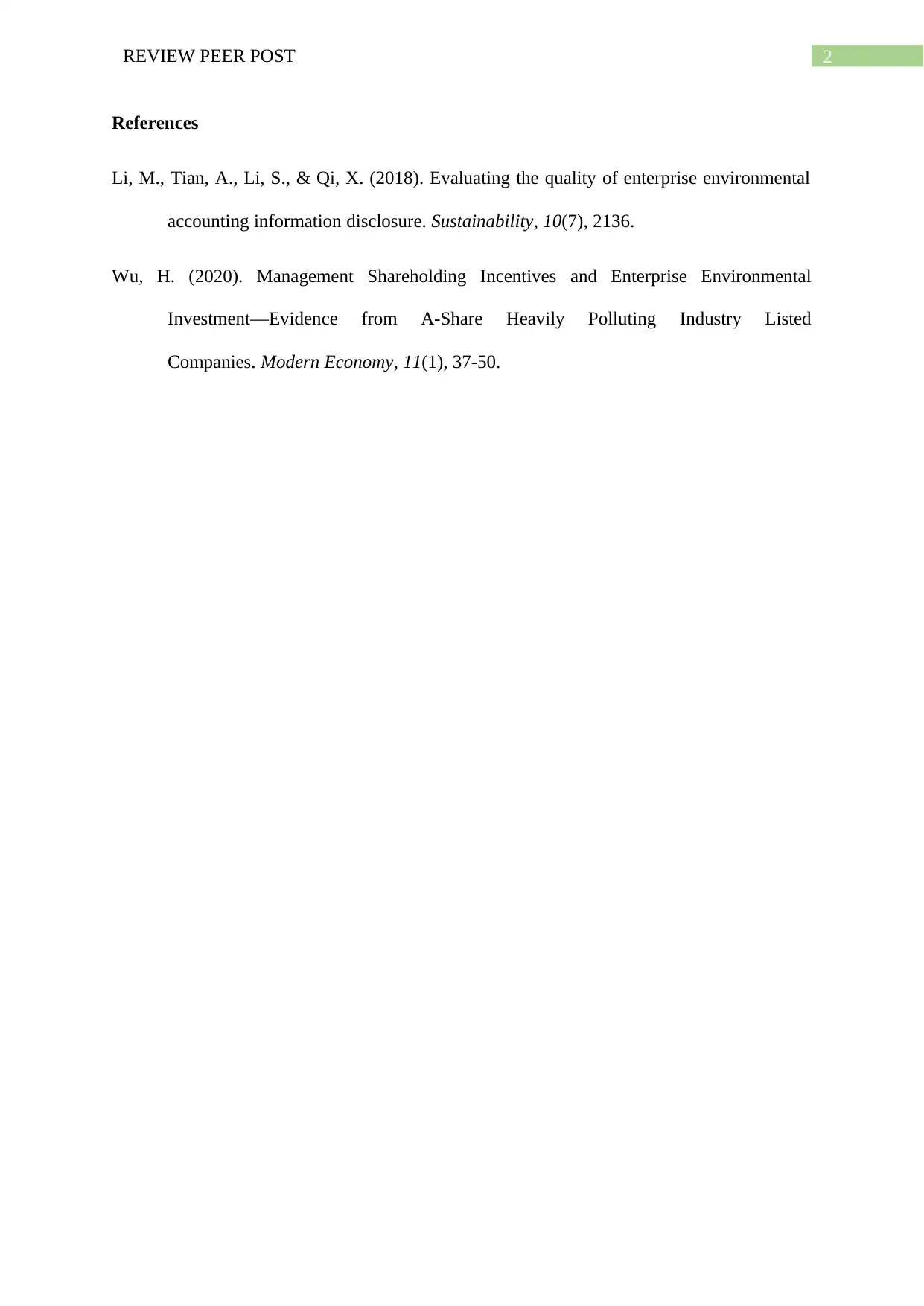University Project Management Peer Post Review and Analysis
VerifiedAdded on 2022/09/22
|3
|407
|21
Report
AI Summary
This report provides a review of a peer's project management post, focusing on the concept of Enterprise Environmental Factors (EEF) and its influence on project success. The review highlights the importance of considering both internal and external factors, such as political situations, market conditions, and governmental regulations. The reviewer agrees with the post's emphasis on the significance of human resources and their skills in project management, using the University of Western Australia Library as an example. The report also mentions the use of qualitative and quantitative analysis tools like SWOT, PESTLE, McKinsey 7s, and Fishbone diagrams for identifying EEFs. However, the reviewer suggests that a more in-depth analysis of these tools, including their application and benefits, would enhance the post. The report concludes by acknowledging the value of the post in introducing these concepts while recommending further elaboration on the analysis tools for a more comprehensive understanding. References to relevant literature are included to support the analysis.
1 out of 3










![[object Object]](/_next/static/media/star-bottom.7253800d.svg)